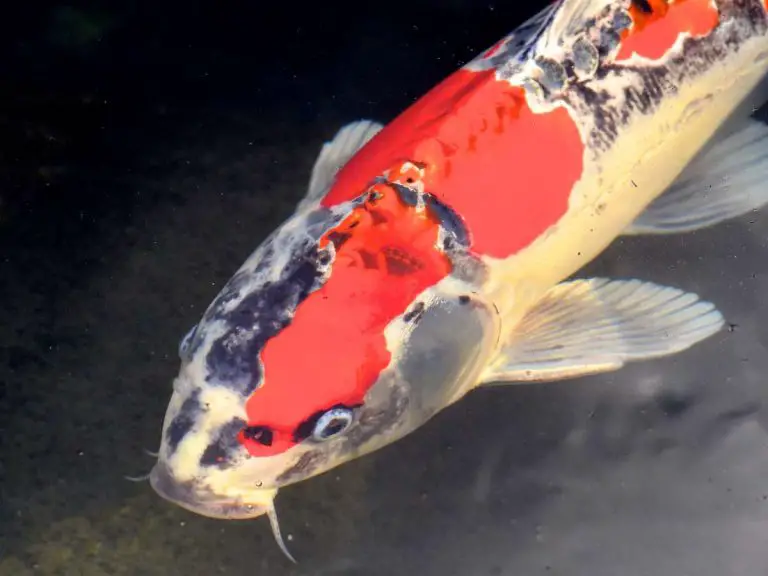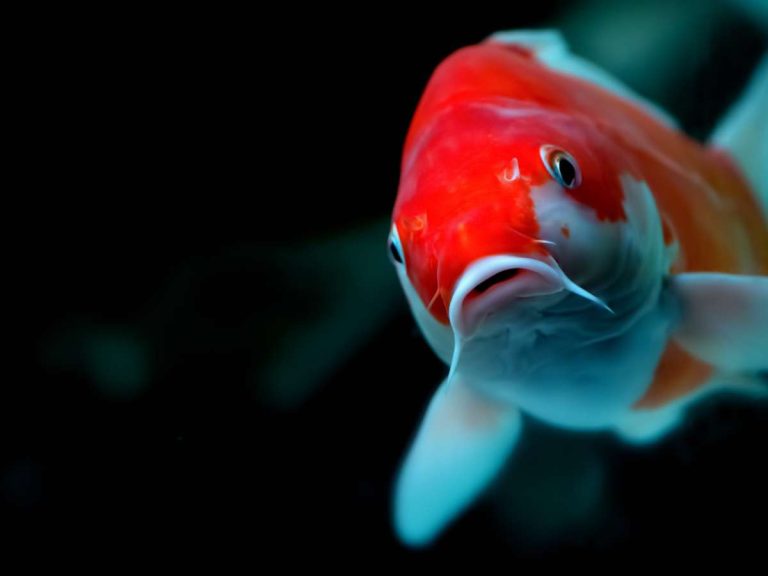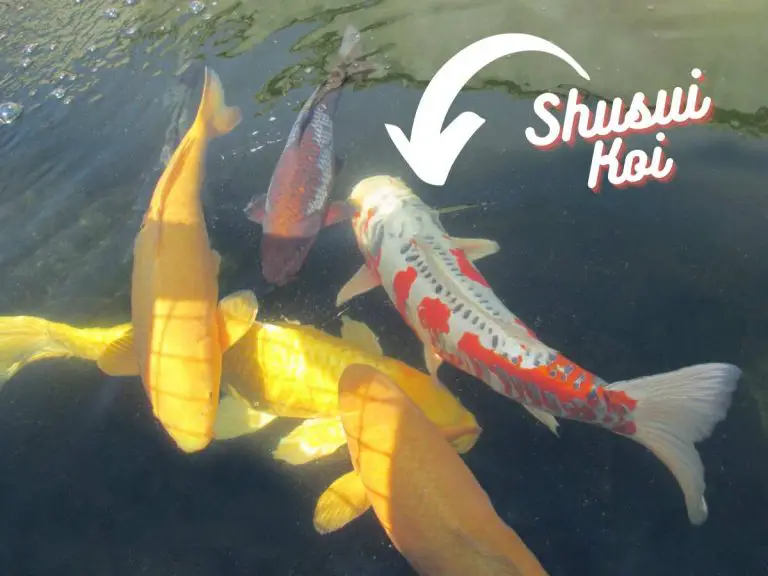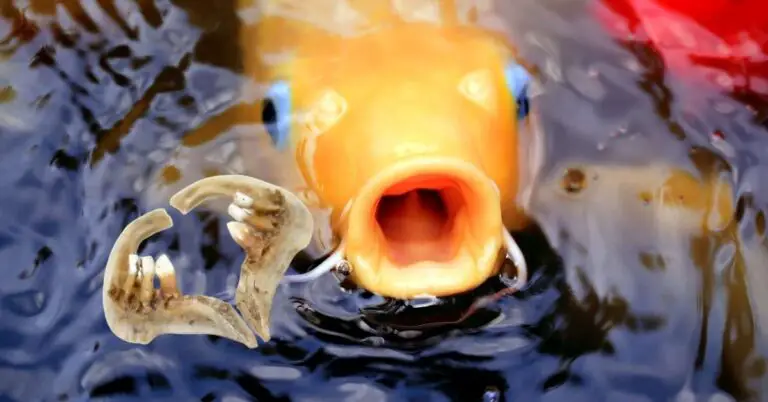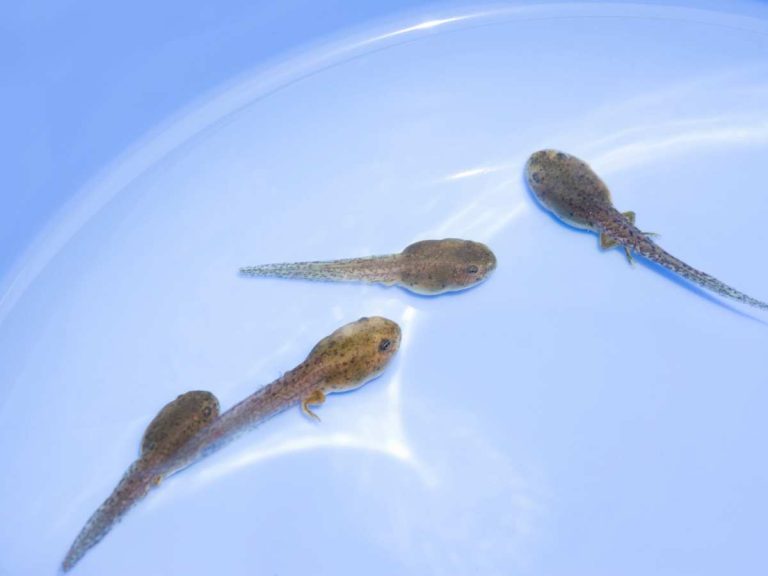Koi Fish Ulcer Treatment Guide: Medical Treatments, Natural Remedies & Prevention
In the tranquil world of backyard fish ponds, the vibrant koi stands as a beacon of beauty and serenity. Yet, beneath their shimmering waters lurks a silent challenge: ulcers. These aren’t mere blemishes, they’re deep, painful, sores, often resulting from bacterial infections, injury, or even simply poor water quality.
The best way to deal with Koi ulcers isn’t just about treatment, it’s about prevention as well. Koi ulcers are treated with a combination of medical interventions, such as antibiotics and topical treatments, and prevented by maintaining optimal water quality, regular health check-ups, and proper handling practices.
Let’s navigate through the causes, symptoms, and the undeniable importance of early detection. I’ll also demonstrate the balance between medical interventions and nature’s own remedies. Ready?
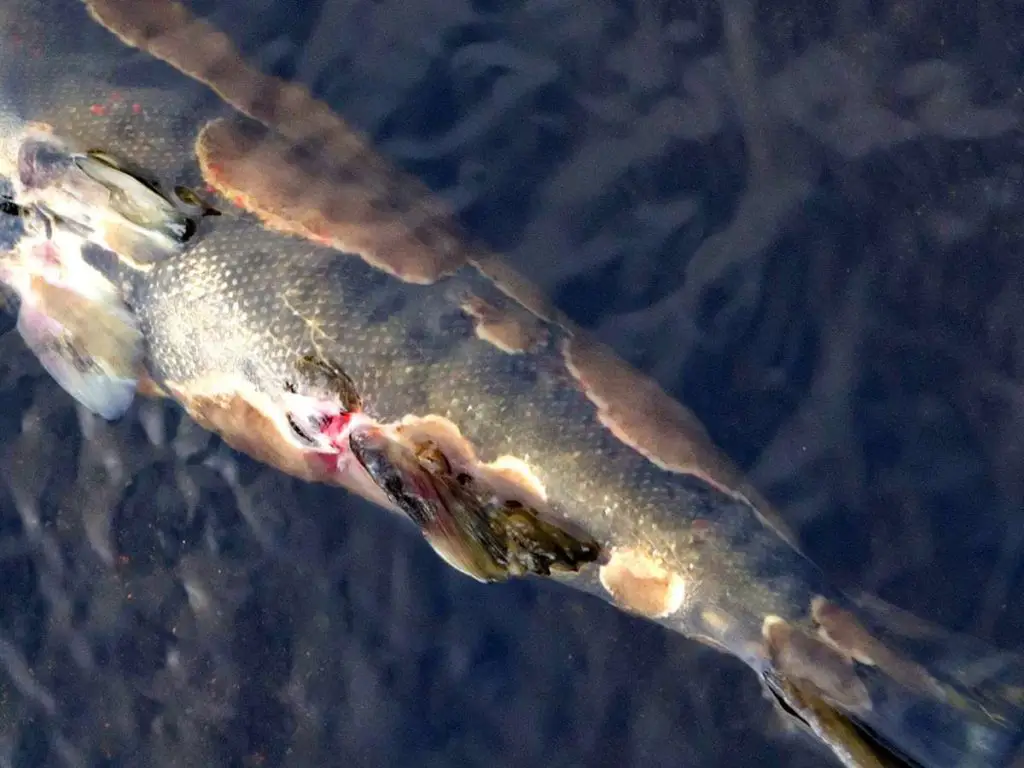
What Are Koi Carp Ulcers?
Koi carp ulcers are open sores or lesions that develop on the body of koi carp and become infected. They can range in size and severity, from small, shallow sores to large, deep wounds.
These ulcers can be caused by a variety of factors including bacterial, viral, or fungal infections, physical damage, or even just poor water quality conditions.
Common causes of koi carp ulcers
| Cause of Ulcer | Description | Solution |
|---|---|---|
| Harmful Bacteria | Presence of aeromonas and pseudomonas bacteria strains in ponds. | Balance pond bacteria using treatments like KoiZyme. |
| Parasites | Gill and skin flukes attach externally causing sores. | Treat with AquaPrazi or other parasite killers. |
| Predator Attacks | Injuries from herons, cats, etc. | Implement predator deterrents and pond netting. |
| Poor Water Quality | Imbalance in water conditions leading to harmful bacteria growth. | Regularly test and maintain water quality. |
| Malnutrition | Feeding low-quality fish food. | Provide nutritious koi food with essential vitamins and minerals. |
There are several common causes of koi carp ulcers. Bacterial infections, such as Aeromonas or Pseudomonas, are often responsible for the development of ulcers. These bacteria can enter the koi’s bloodstream through wounds or cuts and lead to the formation of ulcers. Viral and fungal infections can also contribute to the development of ulcers, although they are less common.
Common Treatments For Koi Carp Ulcers
The follow table will show you the most common measures taken in treating Koi with ulcers, as well as the order you should think about implementing them.
| Treatment Step | Product/Method | Purpose | When to Use |
|---|---|---|---|
| 1 | Wide-spectrum Antibiotics (e.g., Kanamycin) | Kill external and internal bacterium causing ulcers. | At first sign of ulceration or advanced infections. |
| 2 | AquaPrazi | Treat parasites, especially flukes. | At first signs of ulcers or alongside antibiotic treatment. |
| 3 | MELAFIX | Aid in recovery of ulcers and prevent further spreading. | Early ulceration or post-antibiotic treatment during recovery. |
| 4 | KoiZyme | Introduce harmless bacteria to outcompete harmful strains. | After main treatments, as a preventive measure. |
| 5 | Astaxanthin-enriched Food | Strengthen immune system against bacteria. | At first sign of bacterial infections or as a regular supplement. |
Identifying symptoms of ulcers in koi carp
It’s important to be able to recognize the symptoms of ulcers in koi carp in order to provide early treatment.
Common symptoms include the presence of open sores or wounds on the body, redness or inflammation around the affected area, and a slimy or mucus-like coating on the scales.
The koi may also exhibit behavioral changes, such as decreased activity or loss of appetite.
Importance of early detection
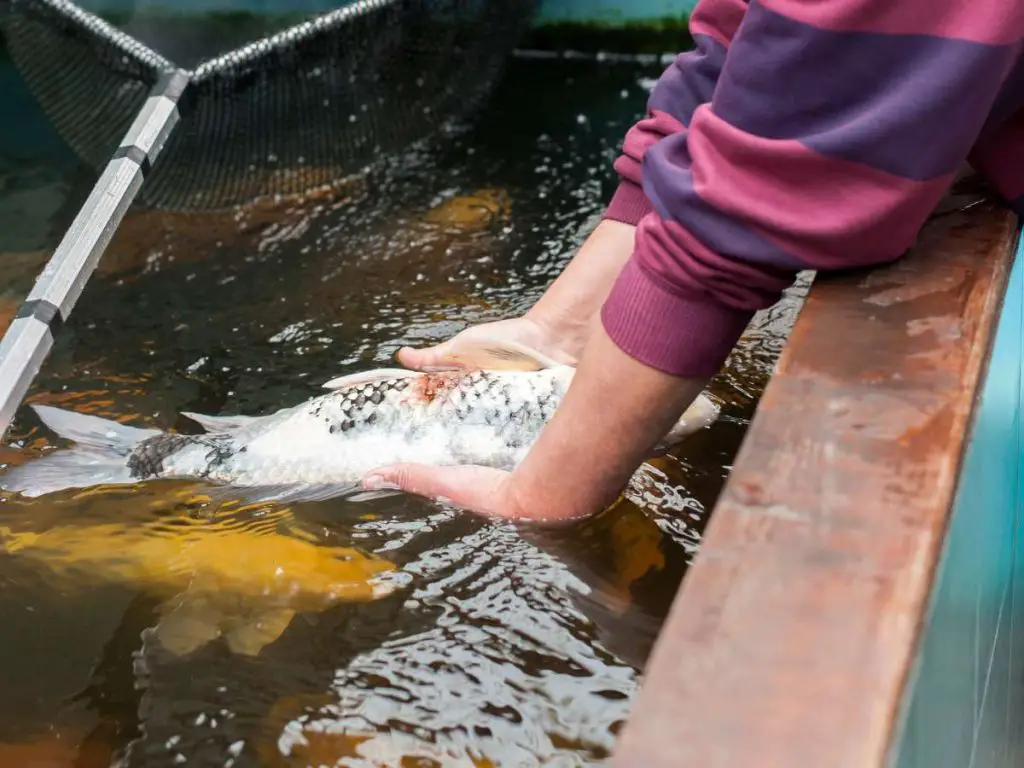
Early detection of ulcers in koi carp is crucial for successful treatment and preventing the spread of infection. If left untreated, ulcers can worsen and lead to further health complications for the fish. By regularly monitoring your koi for any signs of ulcers and seeking prompt veterinary care, you can help ensure the best possible outcomes for your fish.
Clean Water Is Crucial For Prevention & Treatment Of Koi Ulcers
To effectively treat ulcers in koi carp, creating a clean and healthy environment is crucial. By ensuring proper water quality management, maintaining optimal pH levels, and controlling the temperature, you can significantly reduce the risk of ulcers in your beloved koi.
| Parameter | Optimal Range | Notes |
|---|---|---|
| Temperature | 15°C – 25°C (59°F – 77°F) | Keeping koi in this temperature range helps maintain their immune system and reduces the risk of bacterial growth that can lead to ulcers. |
| pH Level | 7.0 – 8.5 | A stable pH within this range ensures a healthy environment for koi, reducing stress and the likelihood of diseases, including ulcers. |
Proper water quality management
The first step in creating a clean environment for your koi carp is to prioritize water quality management. Regularly monitor the water parameters such as ammonia, nitrite, and nitrate levels to ensure they are within the recommended range. High levels of toxins can weaken the immune system of your koi, making them more susceptible to ulcers.
Maintaining optimal pH levels
Another important aspect of maintaining a healthy environment for your koi carp is to keep the pH levels in check. The optimal pH range for koi is usually between 7 and 8. Any significant deviations from this range can stress your fish and make them more vulnerable to diseases, including ulcers.
Temperature control for ulcer prevention
Temperature plays a crucial role in preventing ulcers in koi carp. It’s essential to maintain a stable and suitable temperature range for your pond, typically between 68 and 77 degrees Fahrenheit (20 to 25 degrees Celsius). Fluctuations and extremes in temperature can weaken the immune system of your koi, making them more susceptible to ulcers.
Regular water testing and monitoring
Regularly testing and monitoring the water parameters is key to ensuring a clean and healthy environment for your koi carp. Invest in a reliable water testing kit and make it a part of your routine to check the water quality. By staying on top of any deviations or imbalances, you can take preventive measures promptly and maintain a thriving pond for your koi.
Implementing medical treatments

| Treatment Type | Description | Key Considerations |
|---|---|---|
| Antibiotic Therapy | Targets bacterial infections causing ulcers. | Always consult a veterinarian. Ensure correct dosage and duration. |
| Topical Treatments | Direct application on ulcers for healing. | Choose treatments with antibacterial properties. Monitor the wound for any adverse reactions. |
| Surgical Options | Invasive procedures for advanced ulcers. | Considered for unresponsive or severe ulcers. May involve tissue removal or skin grafts. |
| Veterinary Guidance | Expert advice on medication and treatment. | Essential for correct medication selection. Provides guidance on dosage and treatment duration. |
Antibiotic therapy for koi carp ulcers
If your koi carp has developed ulcers, it’s crucial to explore the option of antibiotic therapy. Antibiotics are powerful tools in combating bacterial infections that may be causing or exacerbating the ulcers. Consult with a veterinarian to determine the appropriate antibiotic treatment for your koi.
Topical treatments for ulcer healing
In addition to antibiotics, topical treatments can play a significant role in healing koi carp ulcers. These treatments, such as antibacterial ointments and wound dressings, are directly applied to the affected areas to promote healing and prevent further infection.
Surgical options for severe cases
In severe cases where ulcers have progressed significantly or are unresponsive to other treatments, surgical options may be necessary. This could involve debridement, where the affected tissue is surgically removed, or skin grafts to aid in the healing process.
Veterinary guidance on medication usage
It’s crucial to seek veterinary guidance when using medications to treat koi carp ulcers. Your veterinarian can provide specific instructions regarding dosage, administration, and duration of treatment.
Veterinarians can also guide you in selecting the most suitable medications based on the severity of the ulcers and the individual needs of your koi.
Natural Remedies for Koi Ulcer Healing
When it comes to treating ulcers in koi carp, nature offers a treasure trove of remedies. Among the most popular are aloe vera and oil of cloves.
These herbs don’t just bring relief; they pack a punch with their anti-inflammatory and antimicrobial properties. They actively combat inflammation and ward off infections in the ulcerated regions.
Salt Baths for Ulcer Treatment
Imagine giving your koi carp a spa day! Salt baths are not just a luxury but a potent remedy for those pesky ulcers. By adding salt to the pond water, you’re essentially setting up a barrier against bacterial invaders.
This saline environment is like kryptonite to bacteria, keeping infections at bay. And there’s a bonus: salt baths are like a tonic for the fish’s immune system, armoring it against future ulcer attacks. However, remember, it’s all about balance.
Too much salt can tip the scales and harm the fish. Always keep an eye on the salt concentration to ensure it’s just right.
Steps for Giving Koi a Salt Bath at Home:
- Observe: Regularly check your koi for signs of damage or disease.
- Gather Supplies: Prepare two bowls – one for the salt dip and another with clean pond water. Have salt and an air stone on hand.
- Examine the Koi: Before starting, give your koi a quick check, especially the affected areas.
- Prepare the Salt Dip:
- Fill the first bowl with pond water.
- Mix in 3 ounces of salt per gallon of water.
- Place an air stone in the bowl for oxygen.
- Dip the Koi:
- Gently place the koi in the salt solution.
- Leave it for 10 to 20 minutes, watching its behavior. If it seems stressed, remove it sooner.
- Recovery: After the dip, let the koi rest in the bowl of clean water.
- Safety First: Always stay with your koi during the dip and ensure you’re using the right amount of salt.
Beneficial Bacteria and Probiotics
Think of beneficial bacteria and probiotics as the fish’s tiny warriors, fighting off harmful invaders and healing ulcers. These microscopic allies restore harmony in the fish’s digestive system, bolstering its overall health and immune defenses.
Whether you’re adding them to the fish’s food or administering them directly, probiotics are a game-changer. They not only fortify the fish’s immune system but also fast-track the ulcer healing process.
Dietary Supplements for Immune System Support
Food is not just about filling the belly; it’s about nourishing the body. By adding dietary supplements to your koi carp’s menu, you’re giving them an extra layer of protection against ulcers.
Vitamin C, for instance, is a powerhouse that supercharges the immune system and speeds up wound recovery. And let’s not forget other superfoods like garlic and spirulina.
These not only boost the fish’s defenses but also act as a shield against future ulcer flare-ups. However, a word of caution: always chat with a veterinarian or fish health guru to get the lowdown on the right dosage and supplement duration. After all, it’s about giving your fish the best care possible!
Promoting proper nutrition and diet
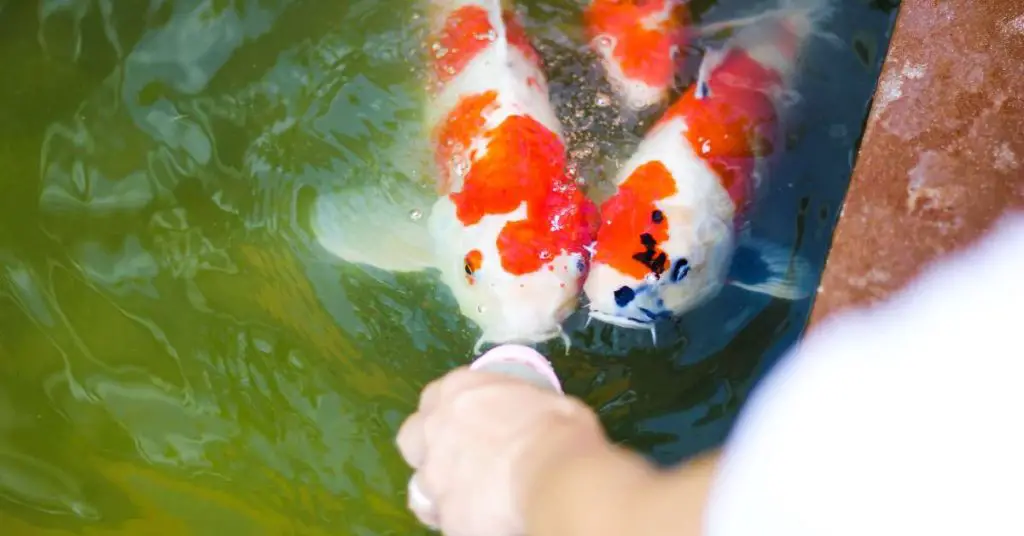
A healthy and balanced diet is crucial for the overall well-being of koi carp. To effectively treat ulcers and promote healing, it is important to focus on providing them with the right nutrition. Here are some key points to consider:
Balanced and high-quality koi food
Choose a high-quality koi food that is specifically formulated to meet their nutritional needs. Look for a brand that contains a good balance of protein, carbohydrates, and fats. Avoid cheap and low-quality options as they may lack essential nutrients and can do more harm than good.
Supplementing with vitamins and minerals
Enhance your koi carp’s diet by supplementing it with vitamins and minerals. Adding fish-friendly supplements that contain essential vitamins such as A, C, and E, as well as minerals like calcium and potassium can help boost their immune system and aid in wound healing.
Avoiding potential trigger food ingredients
Some koi carp may have sensitivities or allergies to certain ingredients in their food. Common trigger ingredients include artificial colorings, fillers, and preservatives. Always read the ingredient list carefully and avoid feeding your koi carp food that contains these potential triggers.
Feeding techniques and schedules
Pay attention to how you feed your koi carp. Overfeeding can lead to poor water quality and digestive issues, which can contribute to the development of ulcers. Feed your koi carp small portions multiple times a day, rather than one large meal. This helps prevent overeating and promotes better digestion.
Additionally, consider feeding techniques such as using a floating feeder or a feeding ring to keep the food from sinking to the bottom. This helps minimize the chances of your koi carp ingesting debris or bacteria that could irritate their skin and lead to ulcer formation.
Preventive measures for future Koi ulcer outbreaks
As koi carp owners, it’s essential to take preventive measures to avoid future ulcer outbreaks. By following these simple steps, you can ensure the health and well-being of your beloved fish.
Quarantine process for new koi carp
Before introducing any new koi carp to your pond, it’s crucial to implement a quarantine process. This involves isolating the new fish in a separate tank for a period of at least two weeks.
During this time, carefully observe the fish for any signs of ulcers or other health issues. This step is vital to prevent the introduction of diseases into your pond and protect your existing koi population.
Regular fish health check-ups
Just like humans, koi carp also need regular check-ups to ensure their overall well-being. Make it a habit to visually inspect your fish on a regular basis. Look out for any changes in behavior, appetite, or physical appearance. Early detection of any potential health issues, including ulcers, can significantly improve the chances of successful treatment.
Proper handling and transport practices
When handling koi carp, it’s crucial to be gentle and avoid unnecessary stress. Use a soft net or container to lift the fish, ensuring not to injure their delicate bodies. During transport, provide proper support and avoid excessive shaking or rough movement. By adopting proper handling and transport practices, you can minimize the risk of physical injuries and subsequently prevent ulcer formation.
Maintaining a stress-free environment
Stress is a significant factor in the development of ulcers in koi carp. To create a stress-free environment, strive to provide optimal conditions in your pond. Ensure proper filtration, aeration, and circulation to maintain water quality. Limit overcrowding and provide enough space for each fish to swim comfortably. By reducing stress levels, you can greatly lower the chances of ulcer outbreaks in your koi carp.

Final Thoughts
So, there you have it – a comprehensive guide on effectively treating ulcers in koi carp. We’ve covered a lot of ground, so let’s quickly recap the main points:
- Understanding what koi carp ulcers are and the common causes
- Identifying the symptoms and emphasizing the importance of early detection
- Creating a clean and healthy environment through water quality management, pH level maintenance, temperature control, and regular monitoring
- Implementing medical treatments including antibiotic therapy, topical solutions, and surgical options
- Exploring natural remedies such as herbal solutions, salt baths, beneficial bacteria, and immune-boosting supplements
- Promoting proper nutrition and diet with balanced koi food, vitamin and mineral supplements, and avoiding trigger ingredients
- Taking preventive measures like quarantining new koi, regular health check-ups, proper handling and transport, and maintaining a stress-free environment
With these key takeaways in mind, you now have the knowledge to help your koi carp heal and prevent future ulcer outbreaks. Remember, early detection is crucial, so stay vigilant and observant of any changes in your fish’s behavior or appearance. By implementing the strategies outlined in this article, you can create a safe and thriving environment for your beloved koi carp.
Related Questions
Can stress contribute to the development of ulcers in koi carp?
Yes, stress can play a role in the development of ulcers in koi carp. Factors such as overcrowding, poor water quality, and improper handling can stress the fish, weakening their immune system and making them more susceptible to ulcers. It is important to maintain a stress-free environment and handle the fish with care to prevent ulcer outbreaks.
Is there a way to prevent ulcers from occurring in koi carp?
While it is not always possible to completely prevent ulcers in koi carp, there are preventive measures that can greatly reduce the risk. Quarantining new koi carp before introducing them to the main pond, regularly monitoring fish health, and providing a clean and healthy environment are effective ways to minimize the chances of ulcer outbreaks. Additionally, proper nutrition and diet, along with regular veterinary check-ups, can help boost the fish’s immune system and overall health.


